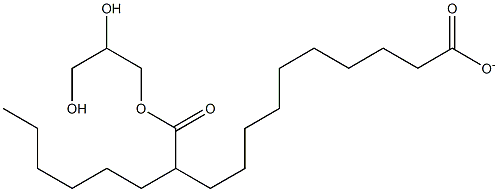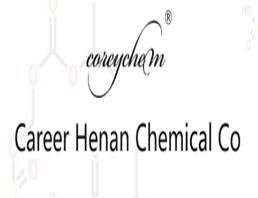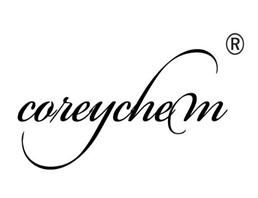
CAPRYLIC /CAPRIC TRIGLYCERIDES
| Price | $1 |
| Package | 1KG |
| Min. Order: | 1KG |
| Supply Ability: | 10000KGS |
| Update Time: | 2020-01-03 |
Product Details
| Product Name: CAPRYLIC /CAPRIC TRIGLYCERIDES | CAS No.: 73398-61-5 |
| Min. Order: 1KG | Purity: 99% |
| Supply Ability: 10000KGS | Release date: 2020/01/03 |
Email:hanne@coreychem.com
wechat/whastapp:+8615670622393
hanne 815

hanne 815
▼
▲
Product Name:
CAPRYLIC /CAPRIC TRIGLYCERIDES
Synonyms:
CAPRYLIC/CAPRIC TRIGLYCERIDES;odo;MEDIUM-CHAINTRIGLYCERIDE;Mixed decanoyl octanoyl glycerides;Caprylic / capric triglyceride;Decanoyl- and octanoyl glycerides;Einecs 277-452-2;Glycerin, mixed triester with caprylic acid and capric acid
CAS:
73398-61-5
MF:
C21H39O6-
MW:
387.53076
EINECS:
277-452-2
Product Categories:
-
Mol File:
73398-61-5.mol

▼
▲
CAPRYLIC /CAPRIC TRIGLYCERIDES Chemical Properties
▼
▲
density
0.94-0.96
solubility
Soluble in all proportions at 20°C in acetone, benzene, 2-butanone, carbon tetrachloride, chloroform, dichloromethane, ethanol, ethanol (95%), ether, ethyl acetate, petroleum ether, special petroleum spirit (boiling range 80–110°C), propan- 2-ol, toluene, and xylene. Miscible with long-chain hydrocarbons and triglycerides; practically insoluble in water.
EPA Substance Registry System
Mixed decanoyl and octanoyl glycerides (73398-61-5)
▼
▲
Safety Information
▼
▲
▼
▲
MSDS Information
▼
▲
CAPRYLIC /CAPRIC TRIGLYCERIDES Usage And Synthesis
▼
▲
Chemical Properties
A colorless to slightly yellowish oily liquid that is practically odorless and tasteless. It solidifies at about 0°C. The oil is free from catalytic residues or the products of cracking.
Production Methods
Medium-chain triglycerides are obtained from the fixed oil extracted from the hard, dried fraction of the endosperm of Cocos nucifera L. Hydrolysis of the fixed oil followed by distillation yields the required fatty acids, which are then re-esterified to produce the medium-chain triglycerides.
Although the PhEur 6.0 specifies that medium-chain fatty acids are obtained from coconut oil, medium-chain triglycerides are also to be found in substantial amounts in the kernel oils of certain other types of palm-tree, e.g. palm kernel oil and babassu oil. Some animal products, such as milk-fat, also contain small amounts (up to 4%) of the medium-chain fatty acid esters.
Although the PhEur 6.0 specifies that medium-chain fatty acids are obtained from coconut oil, medium-chain triglycerides are also to be found in substantial amounts in the kernel oils of certain other types of palm-tree, e.g. palm kernel oil and babassu oil. Some animal products, such as milk-fat, also contain small amounts (up to 4%) of the medium-chain fatty acid esters.
Pharmaceutical Applications
Medium-chain triglycerides have been used in a variety of pharmaceutical formulations including oral, parenteral, and topical preparations.
In oral formulations, medium-chain triglycerides are used as the base for the preparation of oral emulsions, microemulsions, selfemulsifying systems, solutions, or suspensions of drugs that are unstable or insoluble in aqueous media, e.g. calciferol. Mediumchain triglycerides have also been investigated as intestinalabsorption enhancersand have additionally been used as a filler in capsules and sugar-coated tablets, and as a lubricant or antiadhesion agent in tablets.
In parenteral formulations, medium-chain triglycerides have similarly been used in the production of emulsions, solutions, or suspensions intended for intravenous administration.In rectal formulations, medium-chain triglycerides have been used in the preparation of suppositories containing labile materials. In cosmeticsand topical pharmaceutical preparations, medium-chain triglycerides are used as a component of ointments, creams, and liquid emulsions.
Therapeutically, medium-chain triglycerides have been used as nutritional agents.Diets containing medium-chain triglycerides are used in conditions associated with the malabsorption of fat, such as cystic fibrosis, since medium-chain triglycerides are more readily digested than long-chain triglycerides. Medium-chain triglycerides have been particularly investigated for their use in total parenteral nutrition (TPN) regimens in combination with longchain triglycerides.
Although similar to long-chain triglycerides, medium-chain triglycerides have a number of advantages in pharmaceutical formulations, which include better spreading properties on the skin; no impedance of skin respiration; good penetration properties; good emollient and cosmetic properties; no visible film on the skin surface; good compatibility; good solvent properties; and good stability against oxidation.
In oral formulations, medium-chain triglycerides are used as the base for the preparation of oral emulsions, microemulsions, selfemulsifying systems, solutions, or suspensions of drugs that are unstable or insoluble in aqueous media, e.g. calciferol. Mediumchain triglycerides have also been investigated as intestinalabsorption enhancersand have additionally been used as a filler in capsules and sugar-coated tablets, and as a lubricant or antiadhesion agent in tablets.
In parenteral formulations, medium-chain triglycerides have similarly been used in the production of emulsions, solutions, or suspensions intended for intravenous administration.In rectal formulations, medium-chain triglycerides have been used in the preparation of suppositories containing labile materials. In cosmeticsand topical pharmaceutical preparations, medium-chain triglycerides are used as a component of ointments, creams, and liquid emulsions.
Therapeutically, medium-chain triglycerides have been used as nutritional agents.Diets containing medium-chain triglycerides are used in conditions associated with the malabsorption of fat, such as cystic fibrosis, since medium-chain triglycerides are more readily digested than long-chain triglycerides. Medium-chain triglycerides have been particularly investigated for their use in total parenteral nutrition (TPN) regimens in combination with longchain triglycerides.
Although similar to long-chain triglycerides, medium-chain triglycerides have a number of advantages in pharmaceutical formulations, which include better spreading properties on the skin; no impedance of skin respiration; good penetration properties; good emollient and cosmetic properties; no visible film on the skin surface; good compatibility; good solvent properties; and good stability against oxidation.
Safety
Medium-chain triglycerides are used in a variety of pharmaceutical formulations including oral, parenteral, and topical products, and are generally regarded as essentially nontoxic and nonirritant materials.
In acute toxicology studies in animals and humans, no irritant or other adverse reactions have been observed; for example, when they were patch-tested on more than 100 individuals, no irritation was produced on either healthy or eczematous skin. Medium-chain triglycerides are not irritating to the eyes.
Similarly, chronic toxicology studies in animals have shown no harmful adverse effects associated with medium-chain triglycerides following inhalation or intraperitoneal, oral, and parenteral administration.
In humans, administration of 0.5 g/kg body-weight mediumchain triglycerides to healthy individuals produced no change in blood or serum triglycerides compared to subjects receiving the same dose of the long-chain triglyceride triolein.
In patients consuming diets based on medium-chain triglycerides, adverse effects reported include abdominal pain and diarrhea.
LD50 (mouse, IV): 3.7 g/kg
LD50 (mouse, oral): 29.6 g/kg
LD50 (rat, oral): 33.3 g/kg
In acute toxicology studies in animals and humans, no irritant or other adverse reactions have been observed; for example, when they were patch-tested on more than 100 individuals, no irritation was produced on either healthy or eczematous skin. Medium-chain triglycerides are not irritating to the eyes.
Similarly, chronic toxicology studies in animals have shown no harmful adverse effects associated with medium-chain triglycerides following inhalation or intraperitoneal, oral, and parenteral administration.
In humans, administration of 0.5 g/kg body-weight mediumchain triglycerides to healthy individuals produced no change in blood or serum triglycerides compared to subjects receiving the same dose of the long-chain triglyceride triolein.
In patients consuming diets based on medium-chain triglycerides, adverse effects reported include abdominal pain and diarrhea.
LD50 (mouse, IV): 3.7 g/kg
LD50 (mouse, oral): 29.6 g/kg
LD50 (rat, oral): 33.3 g/kg
storage
storage temperatures that can be experienced in tropical and temperate climates. Ideally, however, they should be stored at temperatures not exceeding 25°C and not exposed to temperatures above 40°C for long periods. At low temperatures, samples of medium-chain triglycerides may become viscous or solidify. Samples should therefore be well melted and mixed before use, although overheating should be avoided.
In the preparation of microemulsions and self-emulsifying systems, emulsions, or aqueous suspensions of medium-chain triglycerides, care should be taken to avoid microbiological contamination of the preparation, since lipase-producing microorganisms, which become active in the presence of moisture, can cause hydrolysis of the triglycerides. Hydrolysis of the triglycerides is revealed by the characteristic unpleasant odor of free mediumchain fatty acids.
Medium-chain triglycerides may be sterilized by maintaining at 170°C for 1 hour.
Medium-chain triglycerides should be stored protected from light in a well-filled and well-closed container. When stored dry, in sealed containers, medium-chain triglycerides remain stable for many years.
In the preparation of microemulsions and self-emulsifying systems, emulsions, or aqueous suspensions of medium-chain triglycerides, care should be taken to avoid microbiological contamination of the preparation, since lipase-producing microorganisms, which become active in the presence of moisture, can cause hydrolysis of the triglycerides. Hydrolysis of the triglycerides is revealed by the characteristic unpleasant odor of free mediumchain fatty acids.
Medium-chain triglycerides may be sterilized by maintaining at 170°C for 1 hour.
Medium-chain triglycerides should be stored protected from light in a well-filled and well-closed container. When stored dry, in sealed containers, medium-chain triglycerides remain stable for many years.
Incompatibilities
Preparations containing medium-chain triglycerides should not come into contact with polystyrene containers or packaging components since the plastic rapidly becomes brittle upon contact. Low-density polyethylene should also not be used as a packaging material as the medium-chain triglycerides readily penetrate the plastic, especially at high temperatures, forming an oily film on the outside. High-density polyethylene is a suitable packaging material. Closures based on phenol resins should be tested before use for compatibility with medium-chain triglycerides. Polyvinyl chloride packaging should also be tested for compatibility since mediumchain triglycerides can dissolve some plasticizers, such as phthalates, out of the plastic.
Materials recommended as safe for packaging medium-chain triglycerides are low-density polyethylene, polypropylene, glass, and metal.
Materials recommended as safe for packaging medium-chain triglycerides are low-density polyethylene, polypropylene, glass, and metal.
Regulatory Status
GRAS listed. Included in the FDA Inactive Ingredients Database (topical preparations). Included in nonparenteral and parenteral medicines licensed in Europe. Included in the Canadian List of Acceptable Non-medicinal Ingredients.
Company Profile Introduction
Established in 2014,Career Henan Chemical Co. is a manufacturerspecializing in the sale of fine chemicals.
Mainly deals in the sales of:
Pharmaceutical intermediates
OLED intermediates:
Pharmaceutical intermediates;
OLED intermediates;
You may like
Recommended supplier
| Product name | Price | Suppliers | Update time | |
|---|---|---|---|---|
| $5.00/1KG |
VIP4Y
|
Hebei Chuanghai Biotechnology Co,.LTD
|
2024-08-19 | |
| $1000.00/1ton |
VIP1Y
|
HEBEI SHENGSUAN CHEMICAL INDUSTRY CO.,LTD
|
2024-08-14 | |
| $6.00/1kg |
VIP1Y
|
HebeiShuoshengImportandExportco.,Ltd
|
2024-08-08 | |
| $0.00/1kg |
VIP1Y
|
Watson Biotechnology Co.,Ltd
|
2024-08-06 | |
| $0.00/1KG |
VIP4Y
|
WUHAN FORTUNA CHEMICAL CO., LTD
|
2024-08-01 | |
| $0.00/25kg |
VIP1Y
|
Hebei Mojin Biotechnology Co.,Ltd
|
2024-07-17 | |
| $10.00/1kg |
VIP1Y
|
Shandong Deshang Chemical Co., Ltd.
|
2024-07-16 | |
| $0.00/1kg |
VIP2Y
|
Hebei Kingfiner Technology Development Co.Ltd
|
2024-06-17 | |
| $18.00/10kg |
VIP1Y
|
Hebei Shengyang Water Conservancy Engineering Co., Ltd.
|
2024-05-13 | |
| $60.00/1kg |
VIP1Y
|
Hebei Zhuanglai Chemical Trading Co.,Ltd
|
2024-05-13 |
- Since: 2014-12-17
- Address: Room 702, Floor 7, Building 10, National University Science Park, High-Tech Zone, Zhengzhou City, H
INQUIRY








 China
China